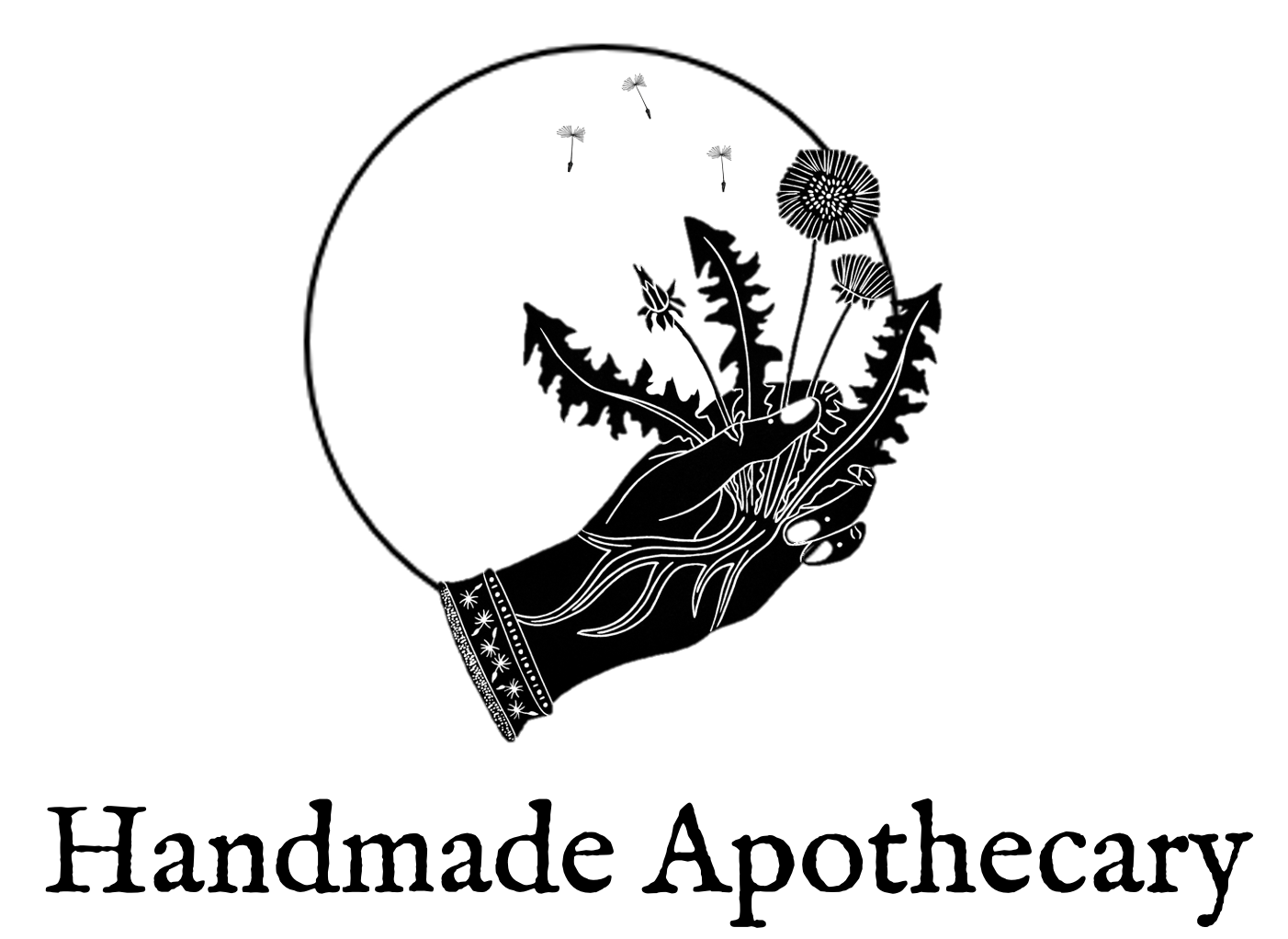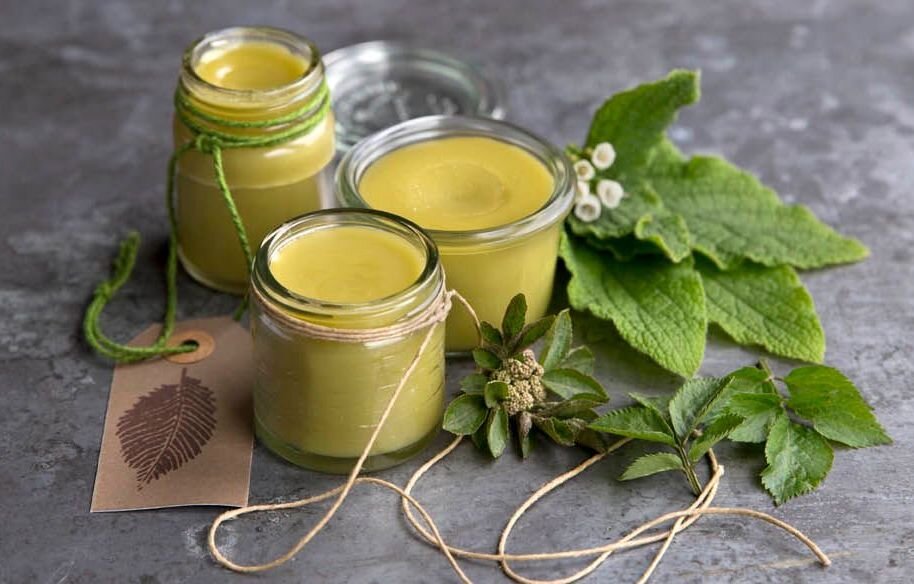Ointments, salves and balms: an introduction
What are ointments, salves and balms?
A comfrey and elder leaf bruise balm. From the Handmade Apothecary. (C) Kyle Books 2017.
Ointments, salves and balms are terms sometimes used interchangeably. They tend to refer to firm, herbal-infused oil based remedies with a topical use. They are made with herbal infused oils with a wax to harden them. They sometimes contain essential oils and tinctures for added medicinal effects and preservation.
A basic ointment recipe can be remade with different ingredients for different purposes. They make an ideal addition to home-remedy medicine chests.
When you make your own ointments, you know exactly what went into them and for a fraction of the cost of ones you would buy at the store. They last a reasonable amount of time (usually 1-2 years).
They are so simple to make, and once you know how, you will be giving them to everyone. It’s addictive!
What is the difference between ointments, salves and balms?
The terms generally mean the same thing, though some people define them slightly differently depending on what was added to the oil base, such as herbs, essential oil or wax type. But no one agrees in the same way. Balms and salves are also used by some to refer to creams that also have a water part.
In medicine and pharmacy, firm, oil-based remedies are most often classed as ointments (or in old medical latin ‘unguentum’). In our herbal training this is what they were called and so this is the name we tend to use. For the rest of this article, however, we will use the word ointment.
What are ointments suitable for?
Ointments are used as topical rubs. They are ideal for things like skincare and muscle and joints.
They are not usually suitable for things like eczema and rashes where a hot sticky oil may worsen it. In hot, itchy conditions like this, opt for a cooling cream instead.
How do you make an ointment?
Ointments use a base of herbal-infused oil hardened with a wax or butter.
If you haven’t visited the page already, please click here to learn how to make infused oils.
The basic beeswax recipe, how to use essential oils and troubleshooting can be found on the next page.
There is also a third page about vegan options.
Click on the button below to access these:

